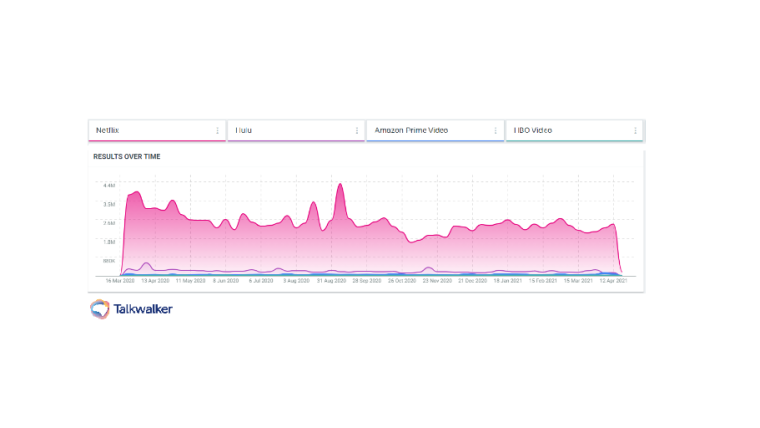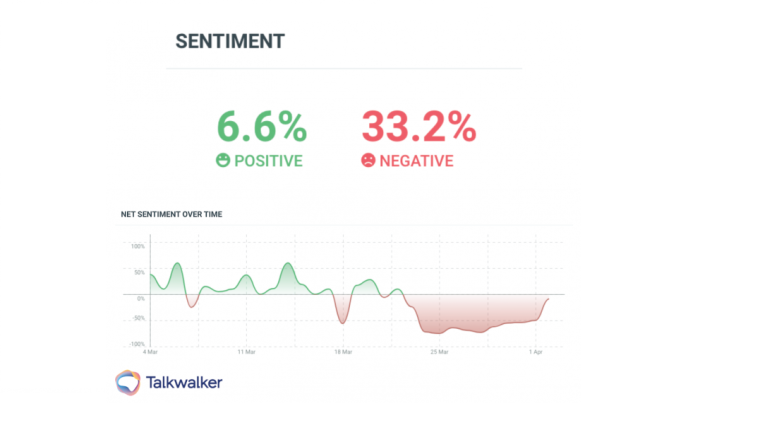
Imagine. You’ve spent months trying to arrange a meeting with your dream client. After all that hard work, you have one hour to give that perfect campaign, PR, or advertising pitch. Nerve-wracking, right?
But there’s a fine line between blowing them away and blowing your chances. We guarantee if you follow the 5 steps outlined below, your advertising campaign pitch will knock their socks off.
1. Know your audience and your audience’s audience
Before you dive into a public relation, marketing, or ad pitch, it is critical you know a client’s business inside and out.
Once you’re hired, there’s no time to waste playing catch-up; you need to hit the ground running. Demonstrate that you know their business like the back of your hand by loading your campaign pitch with consumer insights and tailored details.
With the unique complications of COVID-19, it’s now more important than ever to know what consumers are saying and when.
Talkwalker’s Quick Search tool is an incredibly helpful tool for agencies. Understand the conversations surrounding your client’s brand to pitch advertising ideas based on what the market is buzzing about.
Thanks to real-time social listening, advertisers could gather extremely useful brand insights to add to an advertising pitch, usually with a 13-month overview, as well as a 7-day analysis. 13 months gives advertisers a general overview of the brand, so they observe what really matters to the audience overall. On the flip side, 7 days helps advertisers understand what’s important right now.
2. Don’t forget the competition
Decision-makers have an eye on what their competitors are doing.
Advertisers like to give them something to look at, with competitor analysis. Consumers generally think of 5 brands, so advertisers must take a careful look at the client and their top 4 competitors.
Impersonation may be the highest form of flattery, but blatant copying will get you zero brownie points during a creative pitch in advertising.
So, let’s dig a little deeper. See if anyone is engaging with an audience your potential client is missing. And check what tools and messages they’re using to engage that target audience.

3. Throw in some campaign analysis
There are 3 types of clients you will end up pitching to:
- The clients who have everything going perfectly (incredibly rare).
- The clients who know they have a problem, but don’t know what it is (rare).
- The clients who aren’t even aware there’s a problem (common).
By digging into some of their past campaigns, advertisers can check if they’ve been doing anything wrong and suggest improvements in the pitch deck.
Smart advertisers look at how previous campaigns have resonated with the audience. Whether consumers understood the brand message or got lost in the dark. Also, they look at campaign sentiment analysis.
Just because an ad campaign went viral, doesn’t mean it was a success. Sentiment analysis shows how a campaign impacted the audience’s perception around the brand.

4. Show off your advertising or PR pitch pizzazz
This is where you can have a little fun. It’s time to introduce the wow factor.
If you’re going to win your PR or ad agency pitch, you must stand out from your competition and create a lasting impression.
Getting creative when pitching in advertising is an absolute must. But there’s no reason why your analytics can’t impress your clients as well.
It’s safe to assume engagement is essential for successful social media campaigns. The same applies to a PR agency pitch or any media pitch for that matter.
Make sure you engage with the entire room including your team members, or within a Zoom call if you’re pitching virtually. You might wonder how to pitch a marketing campaign through a laptop, but there is more than one way to impress.
Show off your analytics with awesome visuals, relevant case studies, and if you can, add an interactive element to your presentation. If you have access to real-time monitoring, show it off, and ask your client what matters most to them.
5. Engage your client’s emotions
Never forget, your advertising or PR pitch is a story that builds a relationship with the client. I imagine them as reality shows, like the X Factor. A contestant could win through talent alone, but often, success is down to who gets the best emotional attachment with the crowd.
Emotional engagement works on TV. We know it works in marketing. Now use it to engage your client.
Consumers can get emotionally attached to commercials. You want that emotion in your advertising or PR pitch.
Now, not saying you should have a sob story, but you should be passionate about your pitching. Tell a story with data that leads your client from the beginning to end.
Just because you’re in a boardroom, doesn’t mean clients should be bored.
With so many agencies pitching, your potential client will remember the company that taps into that emotion. And that needs to be you.
Get out there and pitch!
And there you have it.
If you work in a PR or advertising agency, presenting pitches can be a walk in the park. Trust yourself and give it all you got. Research, analyze, and engage. Prove you do have what it takes.
Join thousands of world-leading brands who are using Talkwalker's cutting-edge platform to activate the voice of the customer and gain conversational intelligence - book your free demo today.
This article had previously been published on Talkwalker's blog





Reacties:
Om een reactie achter te laten is een account vereist.
Inloggen Word lid